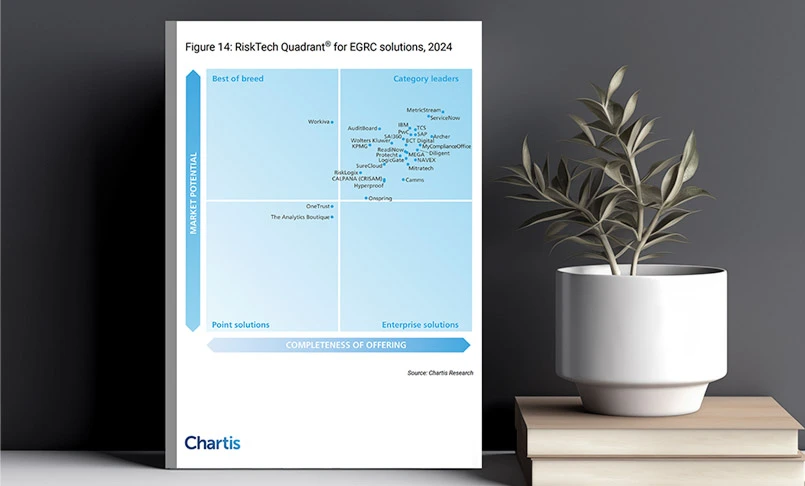What is HIPAA Compliance?
The Health Insurance Portability and Accountability Act (HIPAA) is a U.S. federal law that aims to protect the confidentiality and security of individuals' personal health information (PHI). Enacted in 1996, HIPAA has set out standards for the protection of PHI as well as outlined penalties for non-compliance. It aims to ensure the privacy and security of personal health information, while allowing for the appropriate use and sharing of this information for treatment, payment, and other specified purposes.
Who is Covered Under HIPAA?
| Healthcare Providers | Health Plans | Healthcare Clearinghouses |
|---|---|---|
|
|
|
What are HIPAA Requirements?
HIPAA is broadly categorized into the following sections or titles:
- Title I: HIPAA Health Insurance Reform
It protects the health insurance coverage of workers when they change or lose their jobs. It also sets limits on the number of restrictions that health insurance companies can impose on individuals with pre-existing health conditions. - Title II: HIPAA Administrative Simplification
The Administrative Simplification provisions require the U.S. Department of Health and Human Services (HHS) to establish national standards for processing of electronic healthcare transactions. It also aims to strengthen the security and privacy of health data. Title II requires healthcare organizations to implement administrative, physical, and technical security measures to ensure the confidentiality and integrity of electronic protected health information (e-PHI). - Title III: HIPAA Tax-Related Health Provisions
It comprises of tax-related provisions for healthcare, including certain deductions for medical insurance. - Title IV: Application and Enforcement of Group Health Plan Requirements
It details conditions for group health plans, including coverage of individuals with pre-existing conditions as well as for those seeking continued coverage. - Title V: Revenue Offsets
It includes provisions concerning company-owned life insurance and the treatment of persons who lose their U.S. citizenship for income tax purposes.
There are also Privacy and Security Rules which contain extensive provisions and guidelines surrounding the use, protection, and disposal of sensitive health information.
The Privacy Rule
The Privacy Rule was instituted to protect all individually identifiable health information by health plans, health care clearinghouses, and health care providers that conduct the standard health care transactions electronically. This information, also known as Personal/Protected Health Information (PHI), includes any part of an individual’s medical record, health status, or payment history.
The rule provides guidelines and standards regarding the use and disclosure of individual PHI. It also enables individuals to control how their health information is used.
According to the HHS, “A major goal of the Privacy Rule is to assure that individuals’ health information is properly protected, while allowing the flow of health information needed to provide and promote high quality healthcare and to protect the public’s health and well-being.”
The Security Rule
The Security Rule focuses on protecting the confidentiality, integrity, and availability of e-PHI. Towards that goal, it specifies a number of administrative, physical, and technical safeguards:
- Administrative safeguards
- Define a clear set of policies and procedures to demonstrate compliance with HIPAA requirements; ensure that vendors meet those same requirements
- Perform a risk analysis to evaluate potential risks and implement the appropriate security measures
- Train employees on all privacy and security policies and procedures
- Establish a contingency plan for disasters, data loss, system failure, and other emergencies
- Appoint officials for developing and implementing policies as well as handling individual complaints and requests for information
- Physical safeguards
- Establish effective controls to prevent unauthorized access to healthcare information
- Monitor equipment containing sensitive data measures
- Protect workstations from high traffic and public view
- Establish guidelines for the proper removal, transfer, disposal, and reuse of information media
- Technical safeguards
- Prevent unauthorized access to systems through password locks, system encryption, unique user ID, automatic log-off, etc.
- Ensure data integrity through message authentication and digital signatures
- Conduct regular internal audits to identify security and privacy violations
How to Achieve HIPAA Compliance?
To achieve compliance with HIPPA, organizations need to implement a number of measures, including setting up appropriate controls and safeguards, training employees and officials, aligning policies and procedures, creating and maintaining proper documentation, and more.
However, there are a number of challenges that must be addressed first:
- Siloed processes resulting in duplicate controls and high costs
- Dependency on manual processes for tracking and monitoring regulatory updates and associated controls
- Inefficient documentation with a lack of accountability and audit trail
- Inability to effectively track issues and corrective action when they occur
Here are some of the key measures for successfully achieving HIPAA compliance:
- Clear Understanding of Organizational Risks and Vulnerabilities
A siloed, ad hoc approach is not only inefficient but ineffective. Instead, risk assessments need to be compiled into meaningful insights across business units, departments, operations, and partner locations. By doing so, organizations can gain a unified view of the vulnerabilities in their enterprise and will be better equipped to apply the appropriate mitigation measures. - Holistic, Enterprise-Wide Approach to Control Implementation
Not only does such an approach help streamline workflows, but it also improves collaboration. It enables risks and controls across the enterprise to be managed from a single point of reference. Consequently, visibility and reporting can be enhanced. At the same time, independent responsibilities for controls can be delegated to specific individuals. - Streamlined Document Management
A streamlined approach also improves the ease and efficiency of document management. It enables all policies, procedures, records, and data to be stored in a central repository for easy archival and retrieval - Process Automation
Automation helps covered entities save on costs, resources, and time, while improving efficiency. It also gives managers the freedom to focus more on core profitability and business improvement than on compliance complexities.
How Does MetricStream Help with HIPAA Compliance?
To ensure your organization builds robust IT and cyber risk management processes, MetricStream provides a comprehensive framework to help organizations streamline and automate all aspects of HIPAA compliance. Organizations can effectively break down restrictive silos to become more collaborative and integrated. They are equipped to streamline all aspects of HIPAA compliance such as preparing policies and procedures, assessing and analyzing risks, managing audits, identifying gaps and remedying issues. Powerful capabilities like built-in remediation workflows, time tracking, e-mail based notifications, and risk monitoring improve operational efficiency and effectiveness. In addition, automated controls reduce the time and effort required for HIPAA compliance.
Here's how MetricStream helps you achieve HIPAA compliance:
- Centralized Compliance Environment Design
MetricStream provides a centralized framework to record and maintain all patient records, policies and procedures, certificates, and other data in line with HIPAA rules. It enables organizations to establish a central repository that stores and organizes policies and procedure documents and links them with the compliance, risk, and control framework at each section and sub-section levels. For instance, the risk of unauthorized access to patient data can be immediately associated with a password encryption control. - Streamlined Policy and Document Management
Built-in tools support policy implementation, acceptance, exception tracking, and mapping of policies to compliance requirements. Powerful analytics and reporting with graphical dashboards help track each policy from origin to obsolescence, giving managers complete visibility into the system. Integrated collaboration and workflow tools can be used to access, create, modify, review, and approve policy and procedure documents in a systematic manner. They help to accelerate the review and approval process by automatically moving documents from one stage to the next. - Efficient Risk and Control Assessment
Based on configurable methodologies and algorithms, MetricStream helps organizations effectively identify, assess, and prioritize risks. Configurable risk calculators and risk heat maps help monitor organizational risk profile and report risk activities and results. Organizations can leverage embedded control frameworks such as COSO and ISO 27002 to define a set of controls that can then be used to mitigate risks. Powerful testing capabilities enable assessment and monitoring the effectiveness of controls. - Robust Reporting Capabilities
MetricStream automatically tracks and routes the flow of information to help managers assess the effectiveness of internal controls, adherence to policies, and overall risk profile. It provides the flexibility to create and maintain pre-defined reports as well as ad hoc or scheduled reports. Graphical dashboards provide complete, real-time visibility into enterprise-wide HIPAA compliance processes and statuses. They display statistics and data according to policy type, risk status, audit history, and in-process documents. They can also be drilled down to view data at a finer level of detail - Systematic Management of Certifications and Attestations
Well-defined workflows enable managing certifications in a consistent, reliable and predictable manner. MetricStream helps enforce accountability by facilitating the flow of information and records and documenting attestations and representations at appropriate stages. Organizations can configure and execute certifications and self-assessments by leveraging predefined templates and schedules for designated executives. Support for electronic sign-offs at departmental and functional levels roll up for executive certifications. MetricStream also supports procedures for affirming the strength of internal controls and adherence to policies. This information rolls up to executive managers who can review and certify the overall risk and control assessment for the enterprise in conformance with HIPAA requirements - AI-Powered Issue management and Remediation
MetricStream provides powerful capabilities to improve responsiveness to issues identified. Built-in artificial intelligence capabilities enable effortless classification of issues based on relationships, criticality, and business impact. It helps to accelerate the process of creating and implementing remediation plans and routing to reviewers for approval with real-time tracking of issue remediation.
With MetricStream, you can:
- Streamline and automate HIPAA compliance across the enterprise
- Monitor the compliance levels across the enterprise through powerful dashboards and reporting features
- Improve efficiency, simplify compliance, and minimize costs by replacing manual processes with automated workflows
- Align compliance risks with corporate objectives
- Proactively address and resolve various issues
Request a personalized demo now.
The Health Insurance Portability and Accountability Act (HIPAA) is a U.S. federal law that aims to protect the confidentiality and security of individuals' personal health information (PHI). Enacted in 1996, HIPAA has set out standards for the protection of PHI as well as outlined penalties for non-compliance. It aims to ensure the privacy and security of personal health information, while allowing for the appropriate use and sharing of this information for treatment, payment, and other specified purposes.
| Healthcare Providers | Health Plans | Healthcare Clearinghouses |
|---|---|---|
|
|
|
HIPAA is broadly categorized into the following sections or titles:
- Title I: HIPAA Health Insurance Reform
It protects the health insurance coverage of workers when they change or lose their jobs. It also sets limits on the number of restrictions that health insurance companies can impose on individuals with pre-existing health conditions. - Title II: HIPAA Administrative Simplification
The Administrative Simplification provisions require the U.S. Department of Health and Human Services (HHS) to establish national standards for processing of electronic healthcare transactions. It also aims to strengthen the security and privacy of health data. Title II requires healthcare organizations to implement administrative, physical, and technical security measures to ensure the confidentiality and integrity of electronic protected health information (e-PHI). - Title III: HIPAA Tax-Related Health Provisions
It comprises of tax-related provisions for healthcare, including certain deductions for medical insurance. - Title IV: Application and Enforcement of Group Health Plan Requirements
It details conditions for group health plans, including coverage of individuals with pre-existing conditions as well as for those seeking continued coverage. - Title V: Revenue Offsets
It includes provisions concerning company-owned life insurance and the treatment of persons who lose their U.S. citizenship for income tax purposes.
There are also Privacy and Security Rules which contain extensive provisions and guidelines surrounding the use, protection, and disposal of sensitive health information.
The Privacy Rule
The Privacy Rule was instituted to protect all individually identifiable health information by health plans, health care clearinghouses, and health care providers that conduct the standard health care transactions electronically. This information, also known as Personal/Protected Health Information (PHI), includes any part of an individual’s medical record, health status, or payment history.
The rule provides guidelines and standards regarding the use and disclosure of individual PHI. It also enables individuals to control how their health information is used.
According to the HHS, “A major goal of the Privacy Rule is to assure that individuals’ health information is properly protected, while allowing the flow of health information needed to provide and promote high quality healthcare and to protect the public’s health and well-being.”
The Security Rule
The Security Rule focuses on protecting the confidentiality, integrity, and availability of e-PHI. Towards that goal, it specifies a number of administrative, physical, and technical safeguards:
- Administrative safeguards
- Define a clear set of policies and procedures to demonstrate compliance with HIPAA requirements; ensure that vendors meet those same requirements
- Perform a risk analysis to evaluate potential risks and implement the appropriate security measures
- Train employees on all privacy and security policies and procedures
- Establish a contingency plan for disasters, data loss, system failure, and other emergencies
- Appoint officials for developing and implementing policies as well as handling individual complaints and requests for information
- Physical safeguards
- Establish effective controls to prevent unauthorized access to healthcare information
- Monitor equipment containing sensitive data measures
- Protect workstations from high traffic and public view
- Establish guidelines for the proper removal, transfer, disposal, and reuse of information media
- Technical safeguards
- Prevent unauthorized access to systems through password locks, system encryption, unique user ID, automatic log-off, etc.
- Ensure data integrity through message authentication and digital signatures
- Conduct regular internal audits to identify security and privacy violations
To achieve compliance with HIPPA, organizations need to implement a number of measures, including setting up appropriate controls and safeguards, training employees and officials, aligning policies and procedures, creating and maintaining proper documentation, and more.
However, there are a number of challenges that must be addressed first:
- Siloed processes resulting in duplicate controls and high costs
- Dependency on manual processes for tracking and monitoring regulatory updates and associated controls
- Inefficient documentation with a lack of accountability and audit trail
- Inability to effectively track issues and corrective action when they occur
Here are some of the key measures for successfully achieving HIPAA compliance:
- Clear Understanding of Organizational Risks and Vulnerabilities
A siloed, ad hoc approach is not only inefficient but ineffective. Instead, risk assessments need to be compiled into meaningful insights across business units, departments, operations, and partner locations. By doing so, organizations can gain a unified view of the vulnerabilities in their enterprise and will be better equipped to apply the appropriate mitigation measures. - Holistic, Enterprise-Wide Approach to Control Implementation
Not only does such an approach help streamline workflows, but it also improves collaboration. It enables risks and controls across the enterprise to be managed from a single point of reference. Consequently, visibility and reporting can be enhanced. At the same time, independent responsibilities for controls can be delegated to specific individuals. - Streamlined Document Management
A streamlined approach also improves the ease and efficiency of document management. It enables all policies, procedures, records, and data to be stored in a central repository for easy archival and retrieval - Process Automation
Automation helps covered entities save on costs, resources, and time, while improving efficiency. It also gives managers the freedom to focus more on core profitability and business improvement than on compliance complexities.
To ensure your organization builds robust IT and cyber risk management processes, MetricStream provides a comprehensive framework to help organizations streamline and automate all aspects of HIPAA compliance. Organizations can effectively break down restrictive silos to become more collaborative and integrated. They are equipped to streamline all aspects of HIPAA compliance such as preparing policies and procedures, assessing and analyzing risks, managing audits, identifying gaps and remedying issues. Powerful capabilities like built-in remediation workflows, time tracking, e-mail based notifications, and risk monitoring improve operational efficiency and effectiveness. In addition, automated controls reduce the time and effort required for HIPAA compliance.
Here's how MetricStream helps you achieve HIPAA compliance:
- Centralized Compliance Environment Design
MetricStream provides a centralized framework to record and maintain all patient records, policies and procedures, certificates, and other data in line with HIPAA rules. It enables organizations to establish a central repository that stores and organizes policies and procedure documents and links them with the compliance, risk, and control framework at each section and sub-section levels. For instance, the risk of unauthorized access to patient data can be immediately associated with a password encryption control. - Streamlined Policy and Document Management
Built-in tools support policy implementation, acceptance, exception tracking, and mapping of policies to compliance requirements. Powerful analytics and reporting with graphical dashboards help track each policy from origin to obsolescence, giving managers complete visibility into the system. Integrated collaboration and workflow tools can be used to access, create, modify, review, and approve policy and procedure documents in a systematic manner. They help to accelerate the review and approval process by automatically moving documents from one stage to the next. - Efficient Risk and Control Assessment
Based on configurable methodologies and algorithms, MetricStream helps organizations effectively identify, assess, and prioritize risks. Configurable risk calculators and risk heat maps help monitor organizational risk profile and report risk activities and results. Organizations can leverage embedded control frameworks such as COSO and ISO 27002 to define a set of controls that can then be used to mitigate risks. Powerful testing capabilities enable assessment and monitoring the effectiveness of controls. - Robust Reporting Capabilities
MetricStream automatically tracks and routes the flow of information to help managers assess the effectiveness of internal controls, adherence to policies, and overall risk profile. It provides the flexibility to create and maintain pre-defined reports as well as ad hoc or scheduled reports. Graphical dashboards provide complete, real-time visibility into enterprise-wide HIPAA compliance processes and statuses. They display statistics and data according to policy type, risk status, audit history, and in-process documents. They can also be drilled down to view data at a finer level of detail - Systematic Management of Certifications and Attestations
Well-defined workflows enable managing certifications in a consistent, reliable and predictable manner. MetricStream helps enforce accountability by facilitating the flow of information and records and documenting attestations and representations at appropriate stages. Organizations can configure and execute certifications and self-assessments by leveraging predefined templates and schedules for designated executives. Support for electronic sign-offs at departmental and functional levels roll up for executive certifications. MetricStream also supports procedures for affirming the strength of internal controls and adherence to policies. This information rolls up to executive managers who can review and certify the overall risk and control assessment for the enterprise in conformance with HIPAA requirements - AI-Powered Issue management and Remediation
MetricStream provides powerful capabilities to improve responsiveness to issues identified. Built-in artificial intelligence capabilities enable effortless classification of issues based on relationships, criticality, and business impact. It helps to accelerate the process of creating and implementing remediation plans and routing to reviewers for approval with real-time tracking of issue remediation.
With MetricStream, you can:
- Streamline and automate HIPAA compliance across the enterprise
- Monitor the compliance levels across the enterprise through powerful dashboards and reporting features
- Improve efficiency, simplify compliance, and minimize costs by replacing manual processes with automated workflows
- Align compliance risks with corporate objectives
- Proactively address and resolve various issues
Request a personalized demo now.







